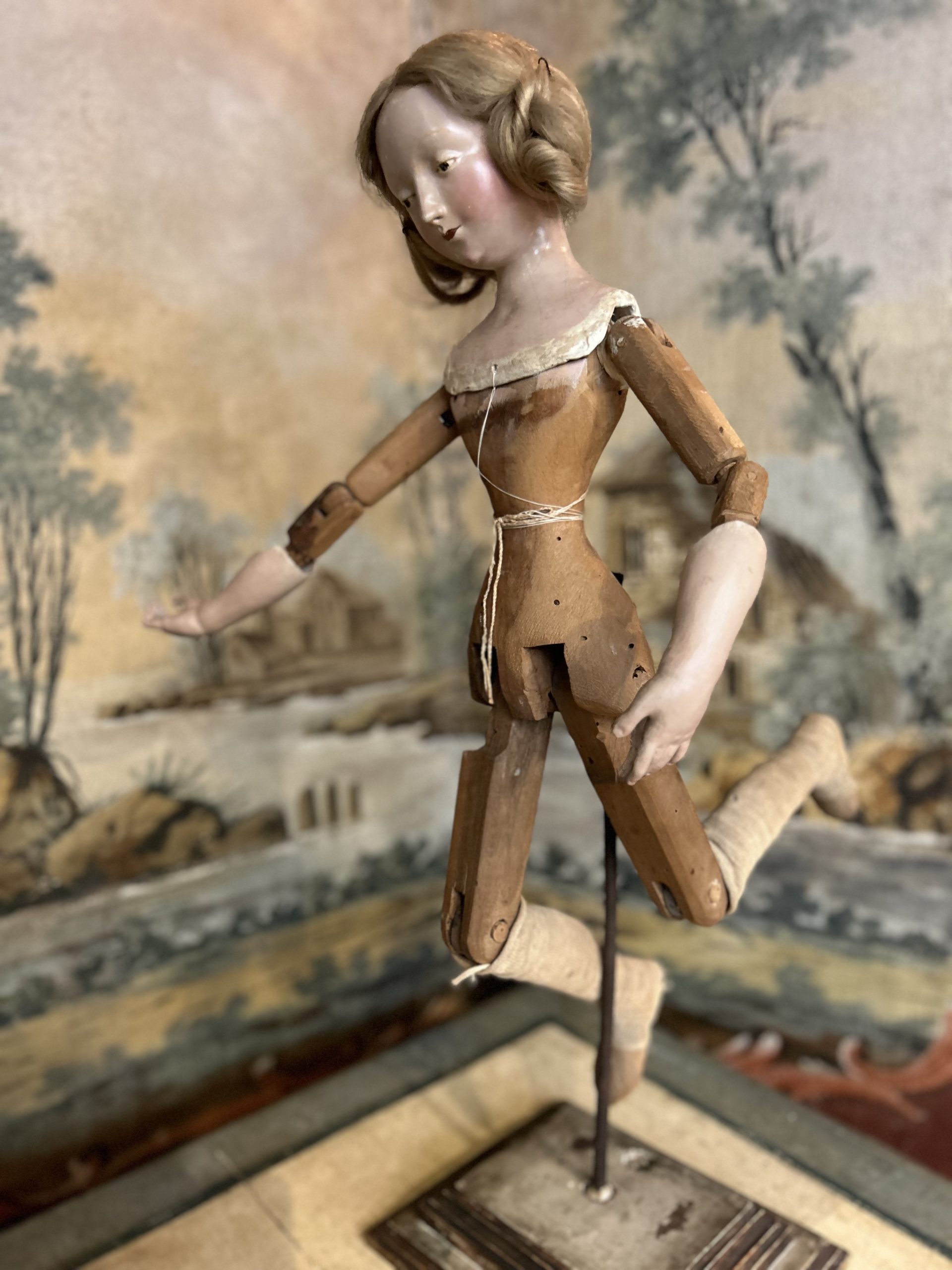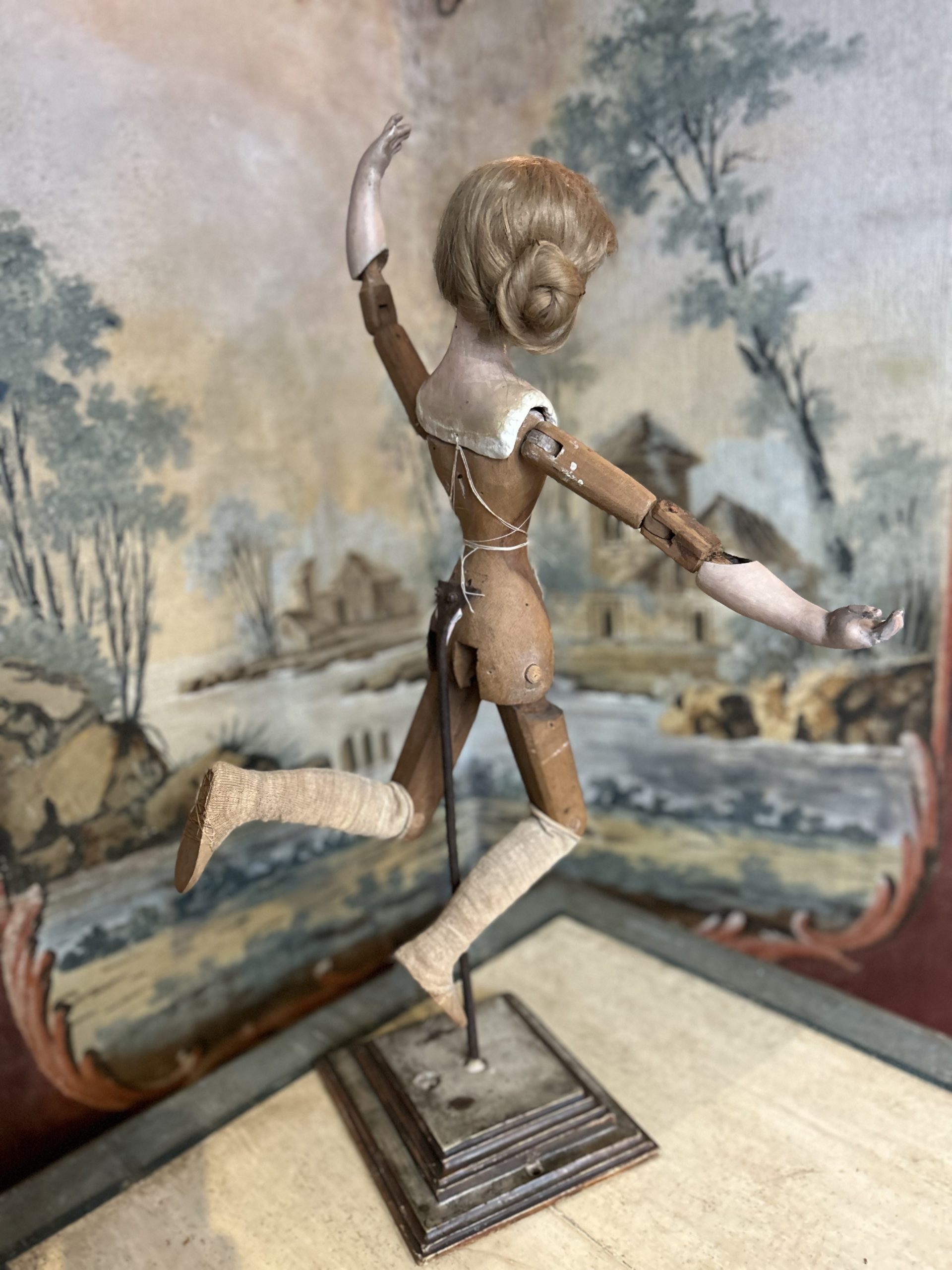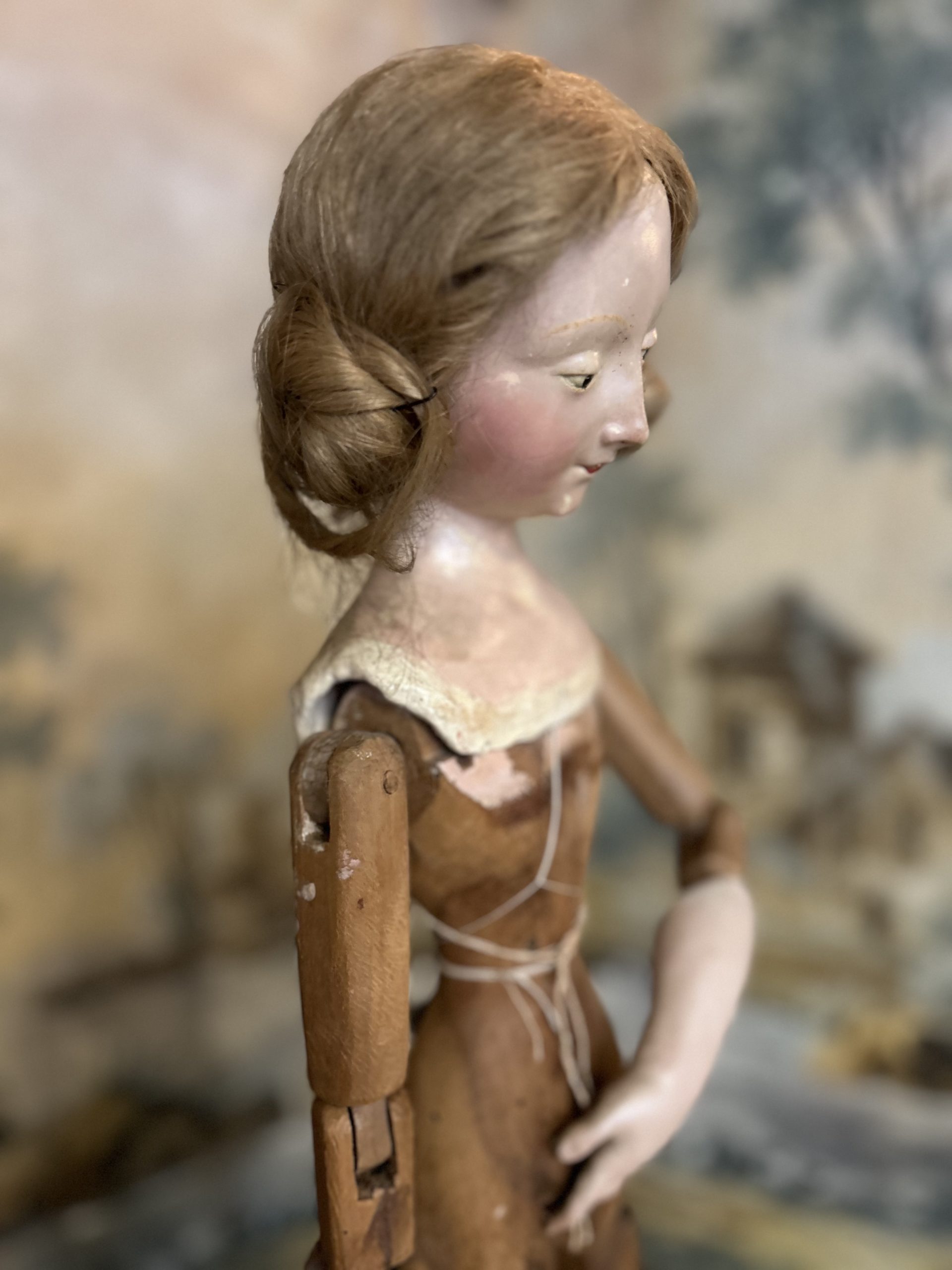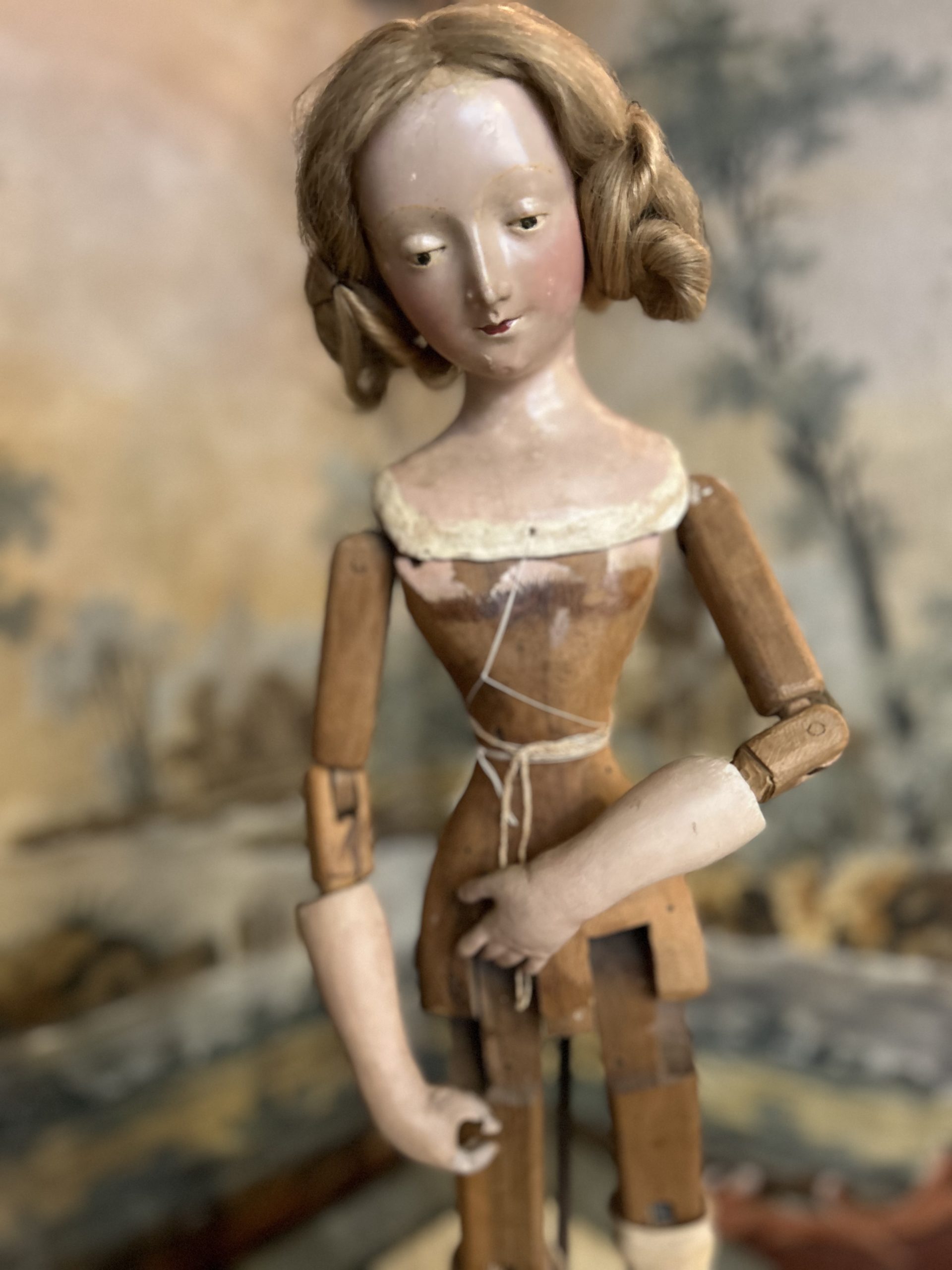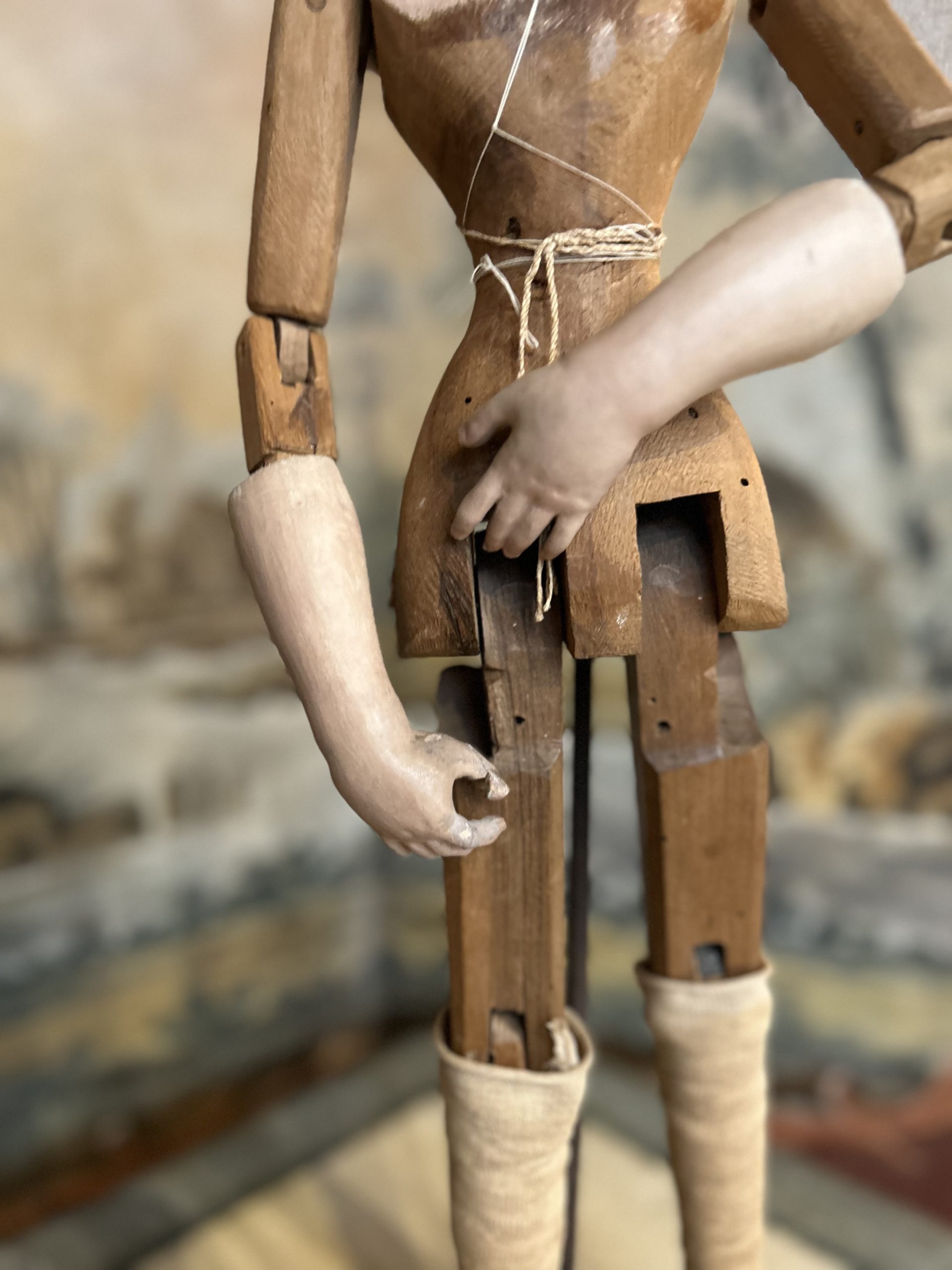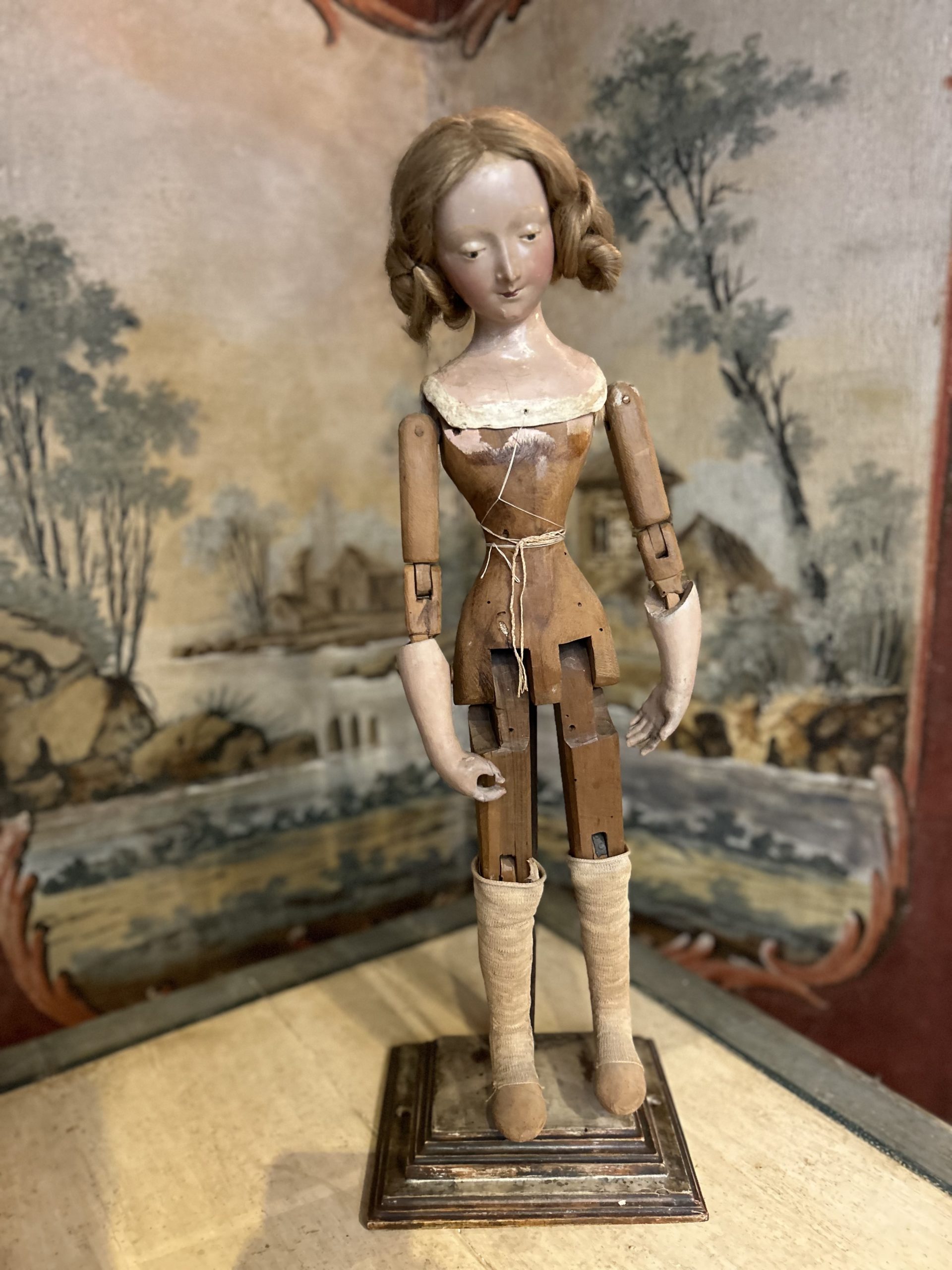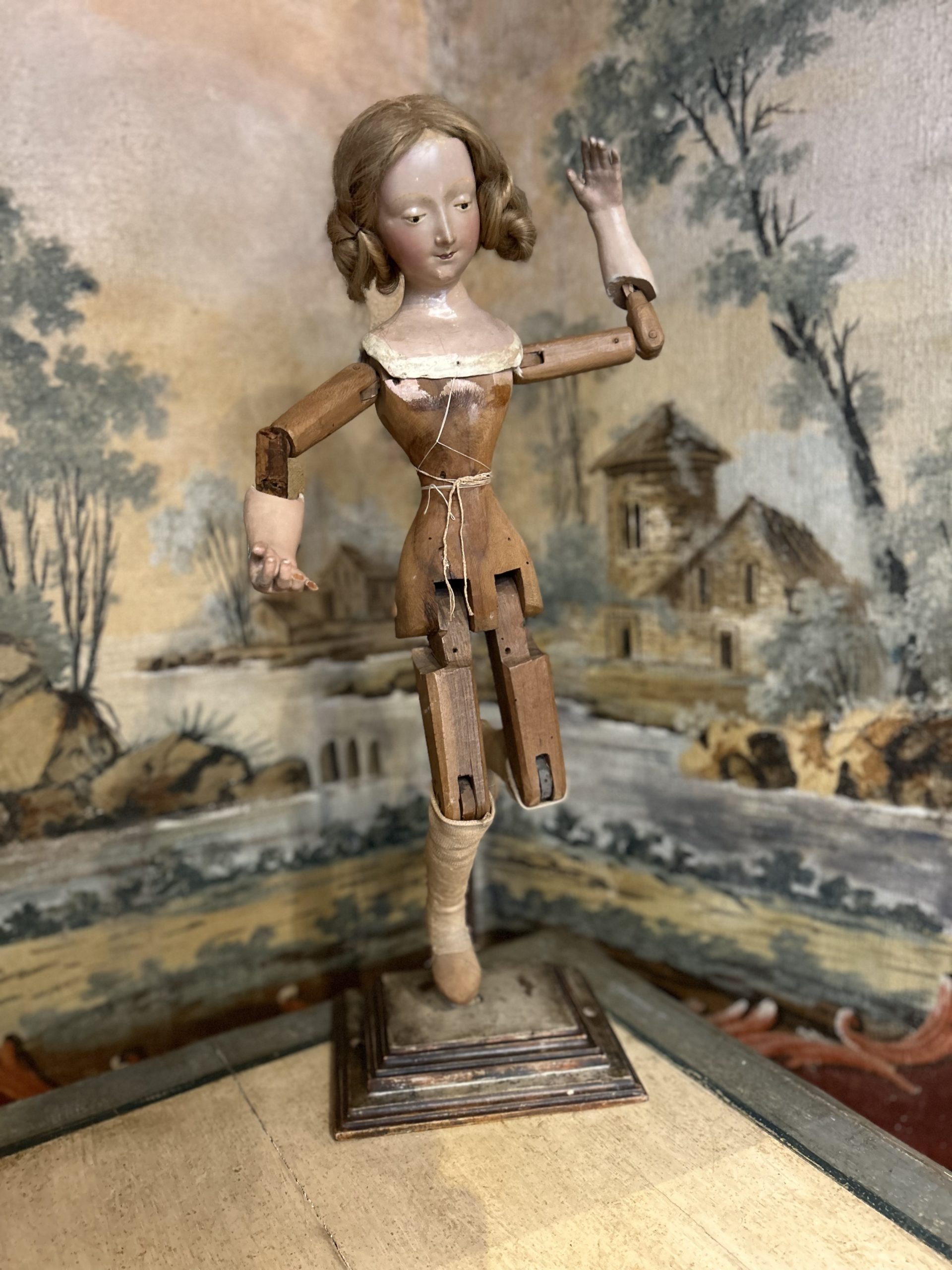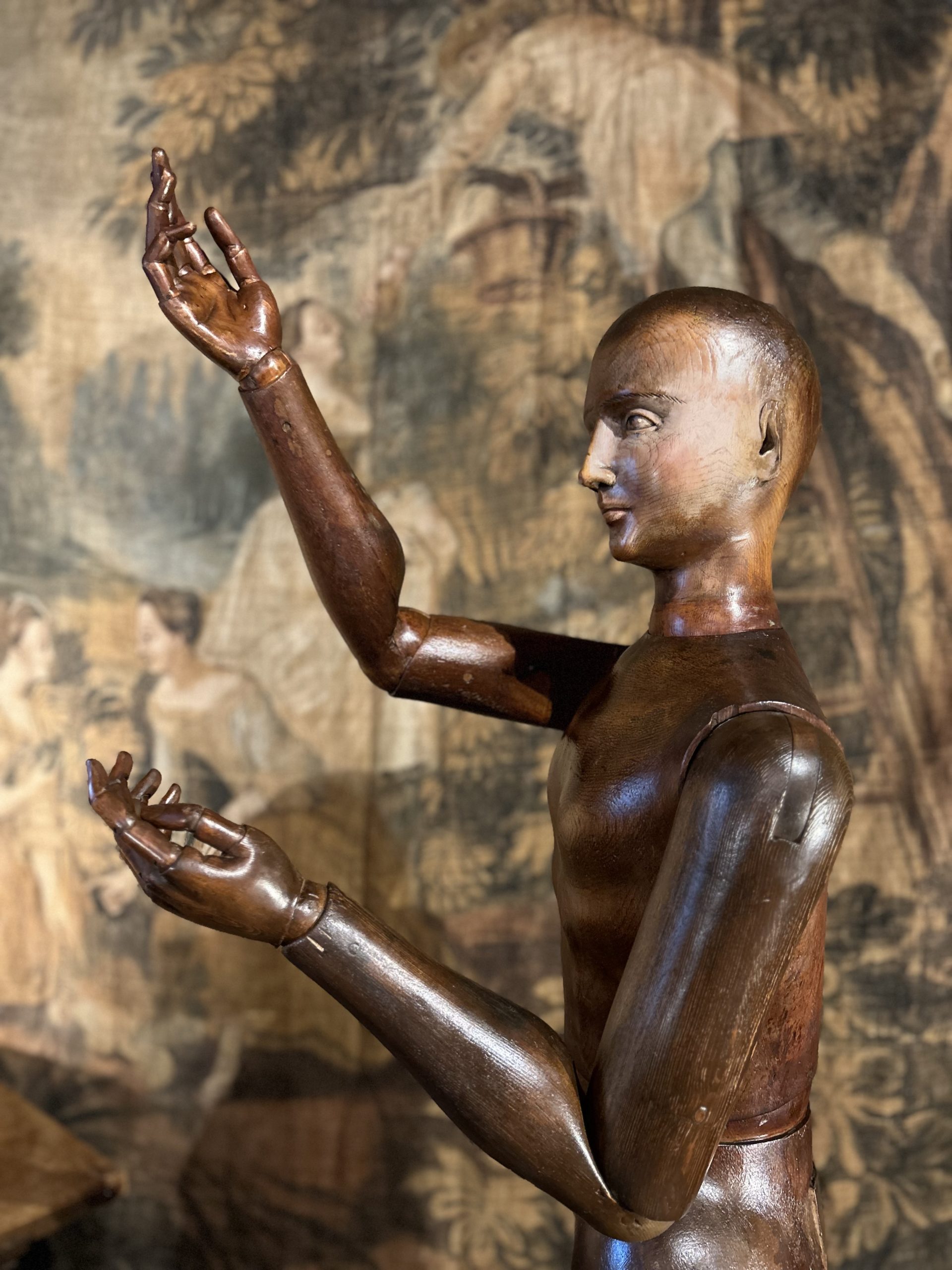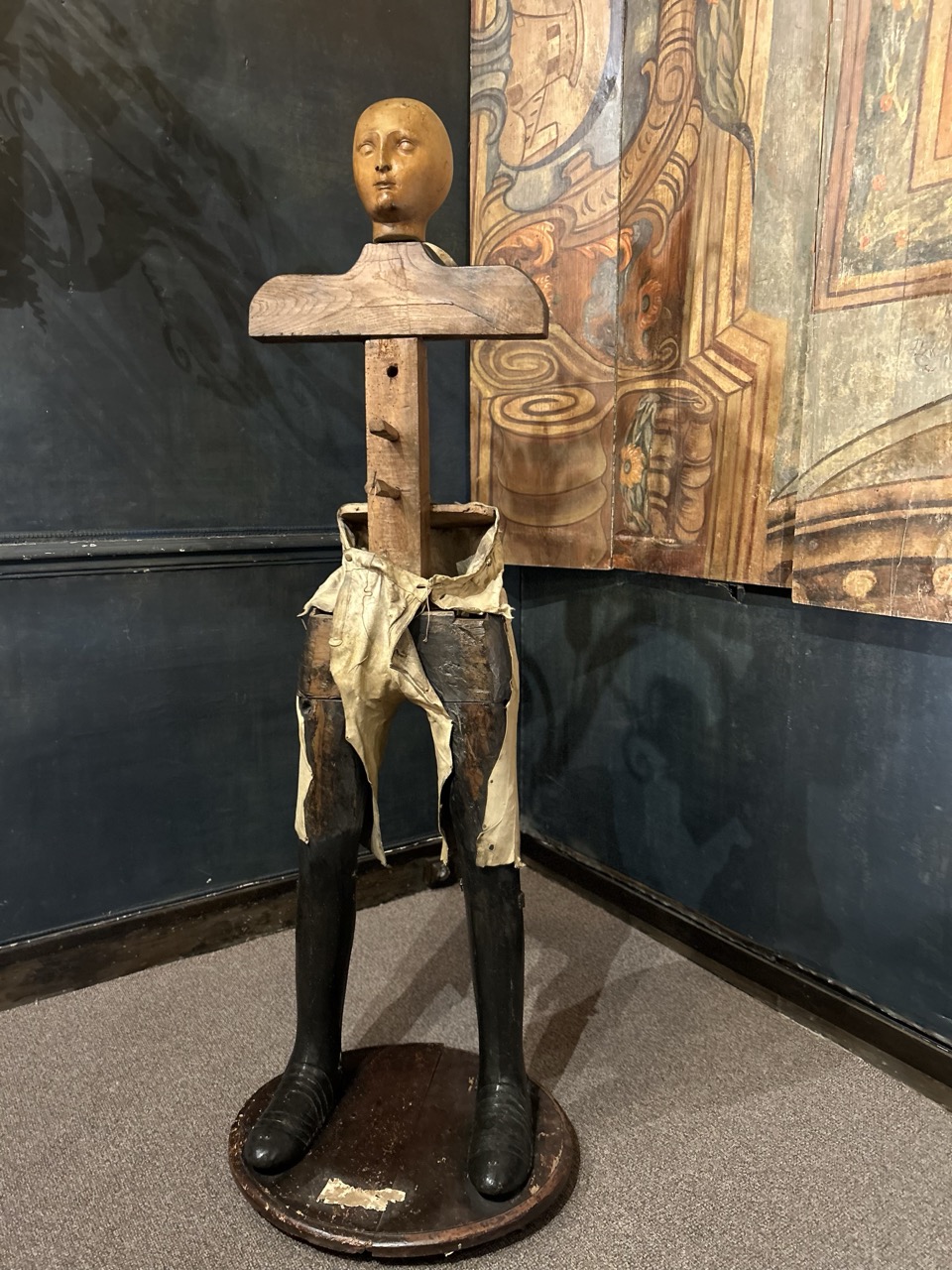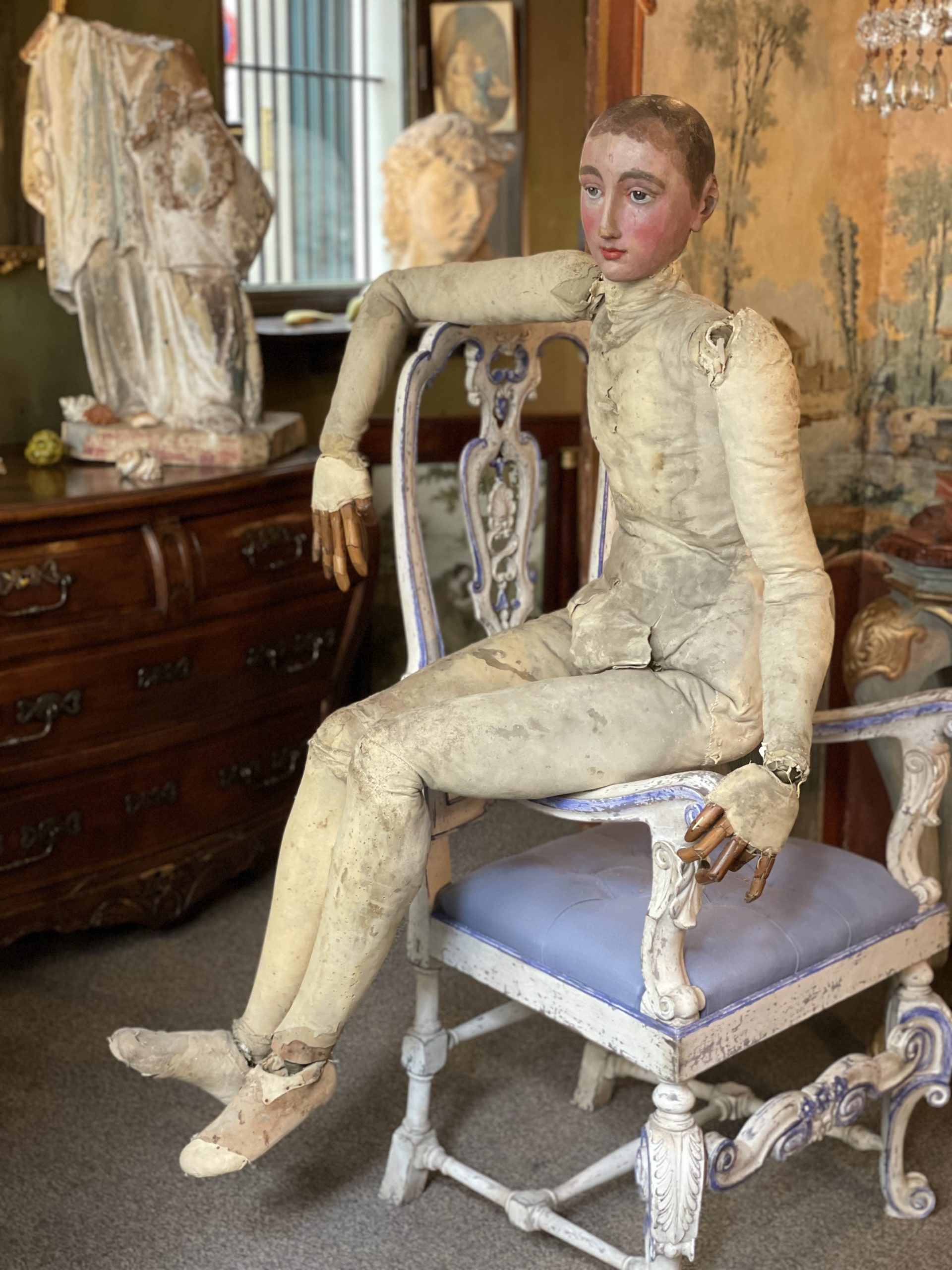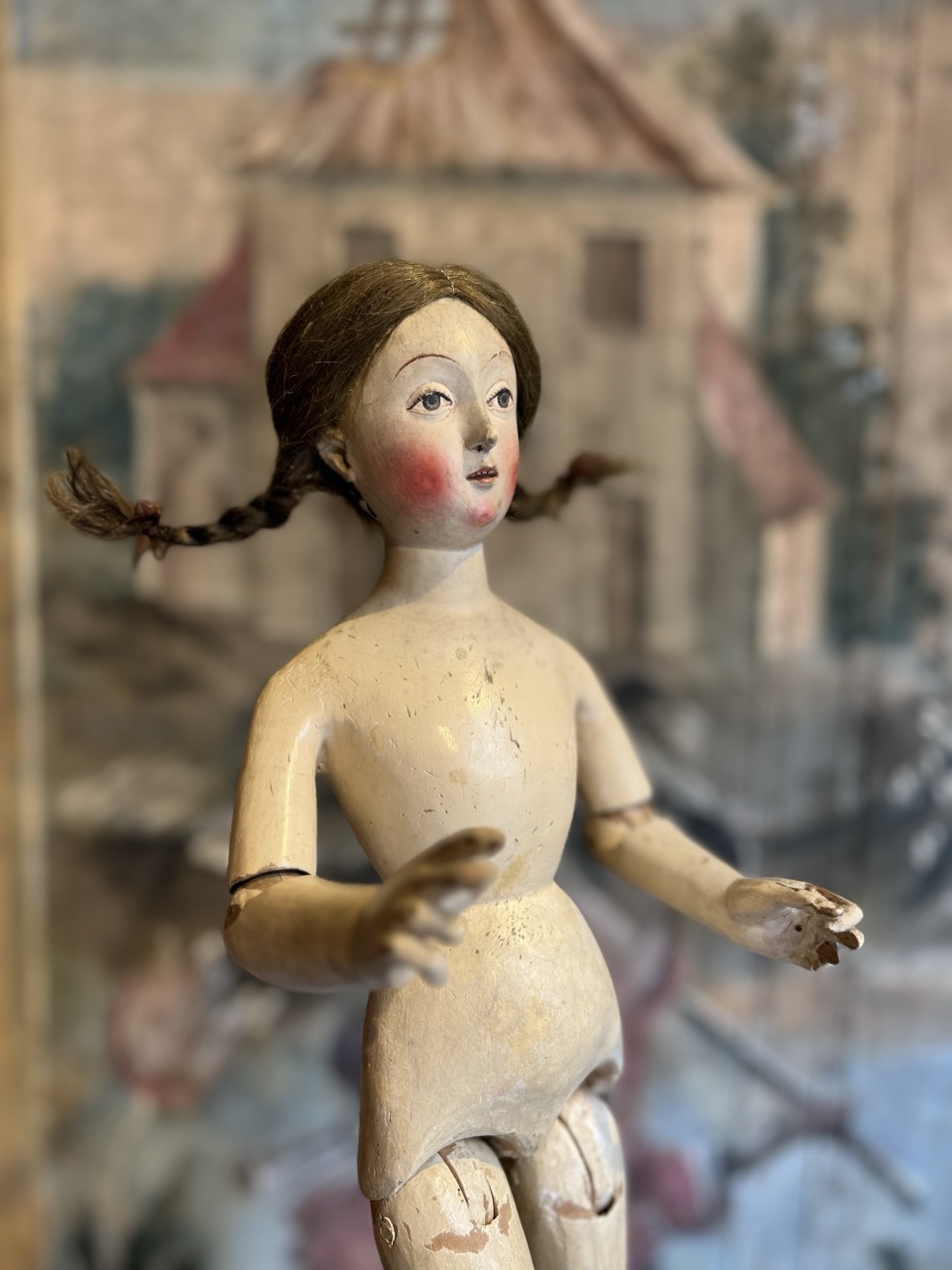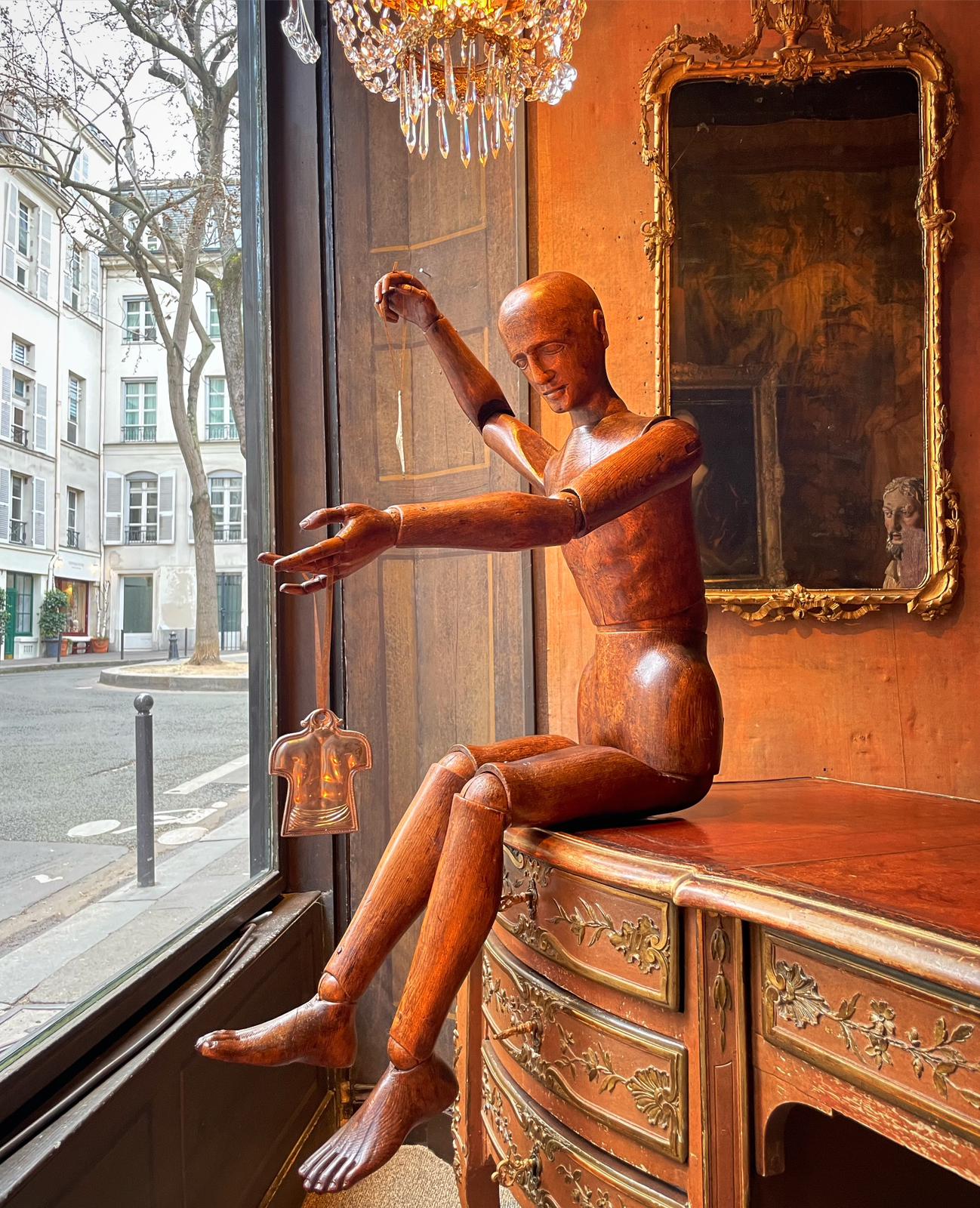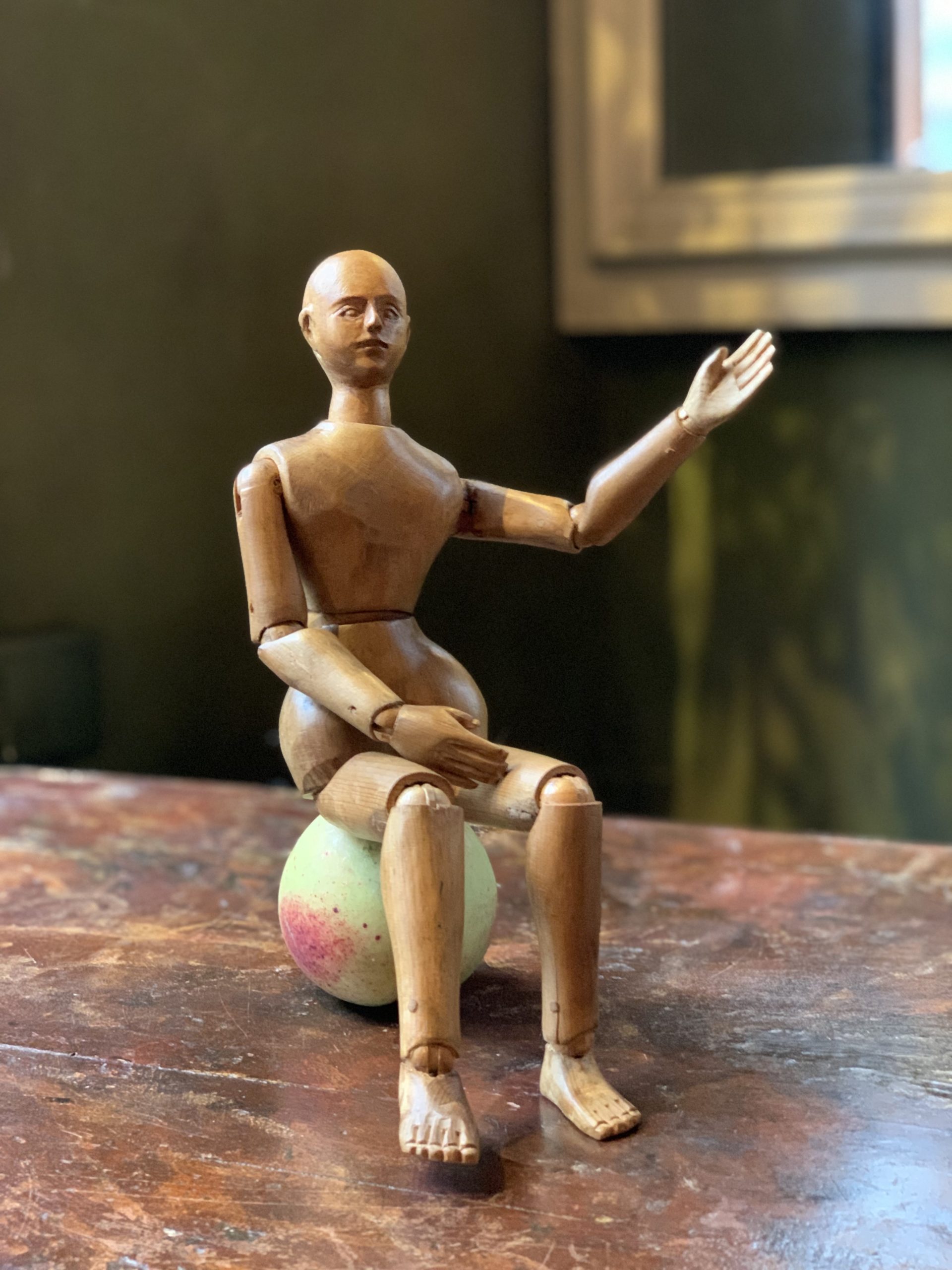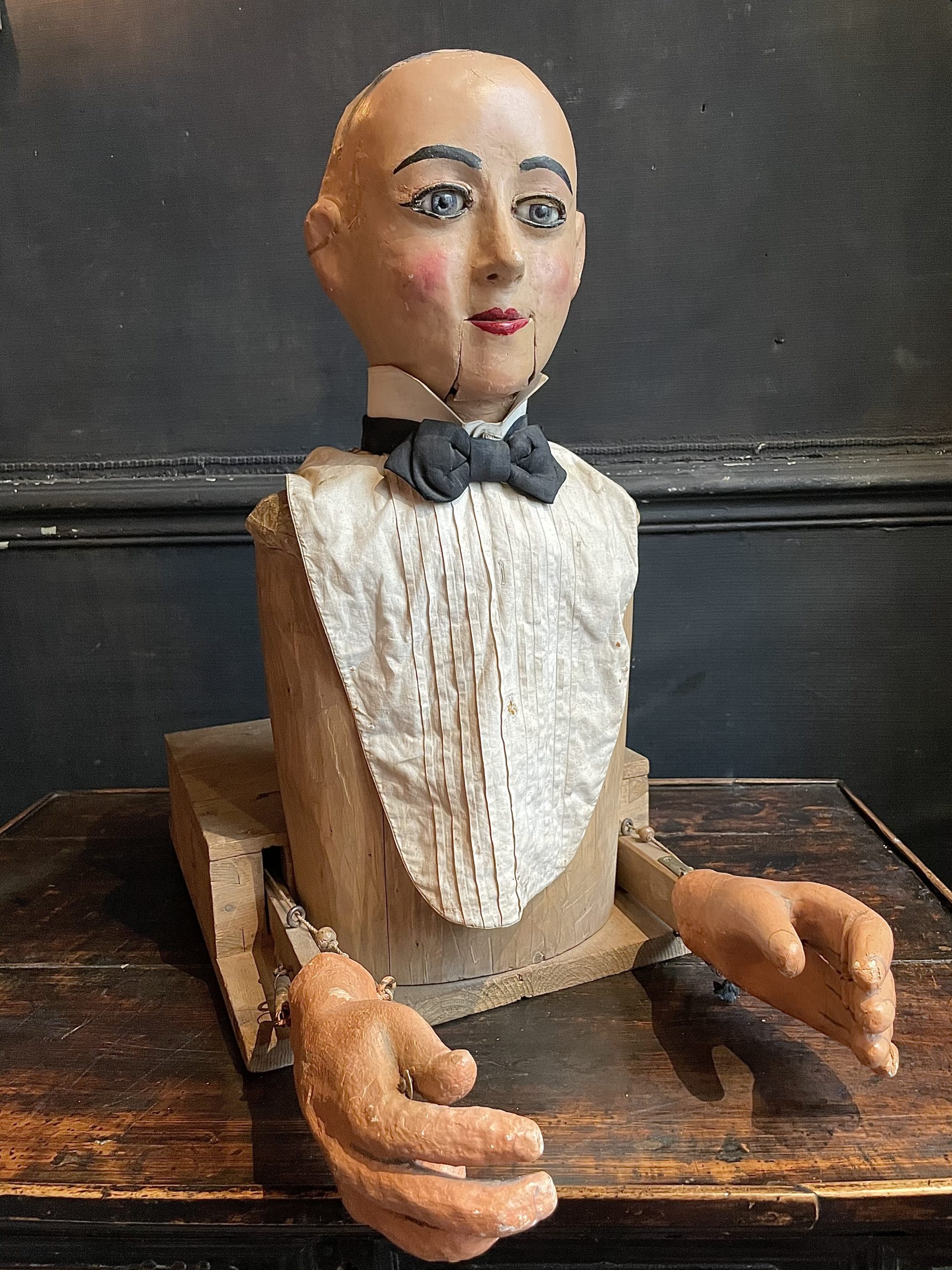Italian “Cap i pota” in carved and articulated wood or procession mannequin
“Cap i pota” are figures worked in detail only on the face and hands, on a more or less sculpted wooden structure. Although dress figures were often used in processions, this is a figure intended for private devotion, given its small size. The visible parts are covered with a thin layer of stucco and polychromed, while the rest is covered with real clothes. These are images particularly valued for their naturalism, as wearing authentic clothing allows a greater degree of realism to be achieved than simply sculpted images, which often do not have sufficient quality to achieve this degree. of naturalism, so sought after in religious art since the Baroque era
Italy
XIX century.

